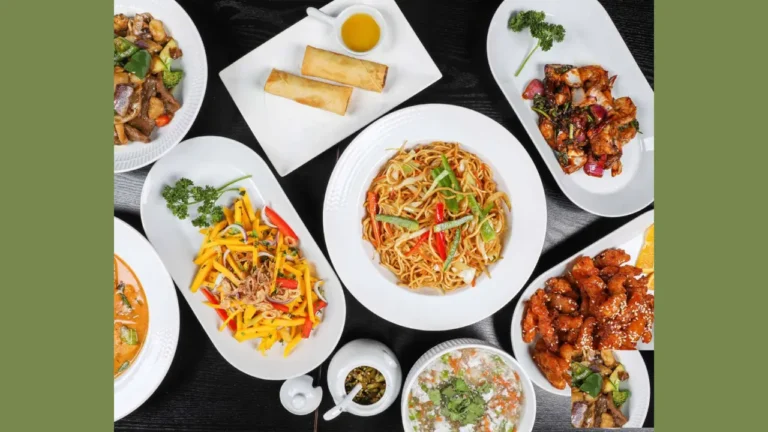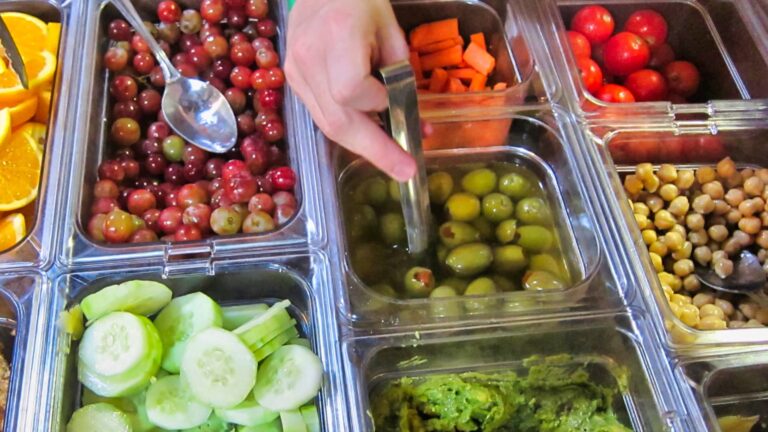What’s the Difference Between Boba and Tapioca
Have you ever enjoyed a cup of milk tea? Treated yourself to a sweet dessert and pondered the little chewy spheres at the base of your drink. Let’s talk about the difference between boba and tapioca. Two common ingredients are often confused but with their characteristics. This blog post will delve into the realm of boba and tapioca discussing their origins differences in flavor and texture nutritional profiles, cooking techniques, and typical applications in beverages and sweets as dispelling some myths along the way. So grab a beverage ( with some boba or tapioca!). Join us on this tasty adventure!
The Origin Stories of Boba and Tapioca
Boba also called bubble tea emerged in Taiwan during the 1980s and swiftly captured attention. The term “boba” specifically points to the chewy tapioca pearls that are a defining element of these beverages. Tapioca itself comes from the cassava root plant in South America.
The introduction of cassava to Asia happened through colonization, where it eventually became an ingredient. The distinct blend of tea, milk, and chewy tapioca pearls gained popularity spreading from Taiwan to regions before making its way to cafes globally.
Boba tea has expanded into a variety of flavors and styles becoming a beloved indulgence.
Nowadays both boba and tapioca have moved beyond their roles. Become essential elements in a wide array of culinary delights adding distinct textures and tastes to contemporary dishes and beverages.
Modern Applications
- Drinks: Boba pearls are commonly found in bubble tea. Also make appearances, in smoothies, iced coffees, and other innovative beverages.
- Sweets: Tapioca pearls elevate puddings, ice creams, and other delectable desserts.
- Treats: Creative chefs incorporate boba into snacks showcasing their flexibility.
Overall the transformation of boba and tapioca from uses to culinary essentials underscores their enduring popularity and the inventive spirit that brought them to life.
Similarities between Boba and Tapioca
Although often viewed as entities, boba and tapioca share key similarities rooted in their shared origin and culinary applications.
- Cassava Root: Both boba and tapioca originate from the cassava root, a tuber to South America. This root is processed to extract tapioca starch, which serves as the foundation for both products.
- Chewy Texture: Once prepared, both boba and tapioca pearls acquire a consistency. The chewy consistency is a standout feature that brings a touch to a variety of drinks and desserts.
- Versatility: Both items are incredibly flexible. Can be incorporated into an array of beverages and dishes. They elevate everything from bubble tea and milk teas to desserts, like puddings and shaved ice offering a burst of sweetness and chewiness.
- Fun Factor: Adding boba pearls and tapioca to creations brings a playful and enjoyable aspect to food and drinks. Their texture and ability to soak up flavors make them popular choices in both contemporary recipes.
- Essential Components: Boba pearls and tapioca have evolved into ingredients in culinary traditions worldwide. They are renowned for their capacity to enrich the experience of foods and beverages.
The time you savor bubble tea or tapioca pudding you’ll recognize the shared qualities and origins of these ingredients!
Variations in Flavor and Texture
Taste
1. Boba (Bubble Tea Pearls)
- Subtle Sweetness: Boba typically carries a gentle sweetness, which can be heightened by flavorings or sweeteners such, as brown sugar or honey incorporated during preparation.
- Flavor Diversity: The flavor of boba can differ based on its preparation method. Some boba pearls may have a taste while others could carry hints of caramel or brown sugar especially if they are prepared, with these flavors.
1. Tapioca Pearls
- Subtle Sweetness: Tapioca pearls offer a sweetness that complements the ingredients they are combined with. They lean towards a flavor profile compared to flavored boba.
- Versatile Flavor: Their mild taste allows them to blend harmoniously with a range of drinks and desserts without overshadowing flavors.
Texture
1. Boba (Bubble Tea Pearls)
- Chewy Texture: Boba pearls are recognized for their chewy texture. This chewiness adds a contrast to the smoothness of beverages enhancing the drinking experience.
- Soft Yet Resilient: The texture of boba is soft enough to be bitten into yet maintains its shape well and offers a resistance when chewed.
1. Tapioca Pearls
- Gelatinous Feel: Tapioca pearls exhibit a gel texture compared to boba. When cooked correctly they turn soft and silky providing a mouthfeel.
- Smooth Experience: The soft and silky texture of tapioca pearls can give them the sensation of gel or jelly offering a element in beverages and desserts.
The unique taste and texture differences play a role,in defining the characteristics of each making them popular ingredients in various culinary dishes.
Nutritional Comparison
● Tapioca Pearls
- Rich in Carbohydrates: Tapioca pearls consist of carbohydrates offering an energy boost. They have protein and fat content.
- Caloric Content: When consumed plain tapioca pearls have a calorie count. However their nutritional value may vary depending on how they’re prepared and served.
● Boba (Bubble Tea Pearls)
- Sugar Addition: Boba often contains added sugars as they are cooked in sugar syrup during preparation. This leads to an calorie content.
- Higher Caloric Content: The additional sugars in boba contribute to a higher calorie content compared to plain tapioca pearls resulting in increased energy intake.
Healthier Choices
To enjoy these indulgences while keeping your diet balanced consider the following suggestions:
- Moderation: Consume boba and tapioca pearls moderately to avoid sugar and calorie intake.
- Balanced Diet: Make sure your diet includes a variety of foods to make up for the lack of vitamins and minerals found in boba and tapioca.
- Healthy Options: Choose bubble tea or tapioca-based treats with sugar. Try using natural sweeteners.
By considering these health factors you can enjoy boba and tapioca pearls as indulgences while still maintaining an wholesome diet.
Common Uses in Drinks and Desserts
1. Boba (Bubble Tea Pearls)
- Milk Teas: Boba pearls are an addition to milk teas offering a chewy texture and subtle sweetness that complements the tea.
- Fruit Teas: Incorporating boba into fruit teas enhances the beverage with a component and a burst of flavor.
- Smoothies: Blending boba into smoothies adds a layer of texture.
- Shaved Ice Treats: Boba pearls are frequently used as toppings for shaved ice desserts providing chewiness to the treat.
- Frozen Yogurt: Mixing boba into yogurt creates a contrast of textures.
2. Tapioca
- Tapioca Pudding: A dessert made by simmering tapioca pearls with milk and sugar to produce a creamy, pudding.
- Thickening Agent: Tapioca flour is utilized to thicken puddings, pies and soups ensuring a consistency without affecting the taste.
- Creations: Tapioca pearls can be included in soups and other savory dishes to enhance their texture.Common Misunderstandings, about Boba and Tapioca.
Myth About Boba and Tapioca
Myth 1: Equating Boba with Tapioca
- Truth: Boba and tapioca are. Not identical. Boba specifically refers to the chewy pearls found in bubble tea whereas tapioca is the starch derived from the cassava root, utilized in products including boba.
Myth 2: Nutritional Misconceptions
- Reality: While boba pearls are primarily made up of carbohydrates tapioca does contain nutrients such as iron and calcium. However sweetened boba pearls can be high in sugar. Should be enjoyed in moderation.
Myth 3: Complexity of Cooking
- Reality: Cooking boba and tapioca can be quite simple. Both require boiling and simmering until reaching the desired consistency. With a bit of practice preparing these ingredients becomes easy. Can elevate a range of dishes and beverages.
By grasping these facts about boba and tapioca you can truly appreciate their characteristics. Enhance your culinary experiences!








